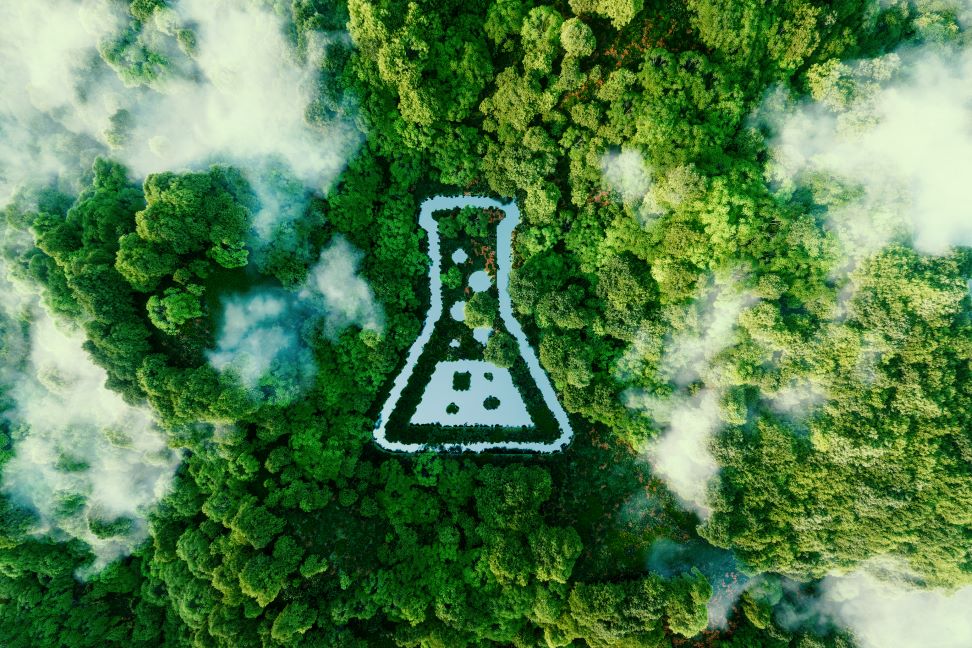
Laboratories are estimated to have five times more environmental impact than office spaces, partly due to their water-intensive operations. Whether it be diluting samples and preparing media, or rinsing glassware, water is used for all manner of background and sensitive applications in clinical diagnostic, pharmaceutical and university research laboratories, and those driving technological development.
As demand for innovative medical solutions and technologies grows, so does the need for water, which must be collected, purified, transported, stored, and re-cleaned before being released into mains supplies. Every stage can require great amounts of energy and water and contributes to a laboratory’s carbon footprint and environmental impact – not to mention costs.
Within the context of the climate crisis, expanding populations and water scarcity, laboratories everywhere must reassess their use of water and processes around it, and take practical steps towards implementing more sustainable solutions.
How can laboratories use water more sustainably?
Sustainable use of water in the lab is not limited to the quantity consumed. It can also extend to the energy consumption of equipment used in water processing, as well as the chemicals used to treat water and their effective removal to protect the environment from contamination when it is released.
Below, we explore some practical methods labs can implement to reduce their environmental impact and take steps towards true sustainability through their use of water.
Use the correct water type for each application
A simple way to increase water sustainability is using the correct water type for each application. Because water purification requires time, energy, and other consumables, using water with an unnecessarily high purity for a particular application creates preventable waste and CO2 emissions, as well as eating up laboratory funds.
To prevent this, pure water of types I, II & III, and that which has been distilled or run through a reverse osmosis (RO) membrane should only be used where the sensitivity of the application or experiment requires it.
Maintain equipment & configure infrastructure effectively
Proper equipment maintenance and infrastructure configuration also increases sustainability. Carrying out regular repairs as soon as leaky taps and pipe issues arise ensure water wastage is kept to a minimum. Innovative technologies can also be implemented that track pipe conditions and create alerts as soon as damage occurs so lab teams can act as quickly as possible to rectify the problem.
Effective equipment cleaning and maintenance can also increase overall water, energy and cost efficiency. Even if costs are incurred in the short-term, RO membranes and filters that are old or in poor condition can waste huge amounts of water in the long-term. In addition, turning down the water pressure of your lab can limit excess water consumption.
Retrofit equipment
Identifying opportunities to retrofit your equipment with more modern and energy and water efficient components offers significant environmental and economic benefits. One study showed that using research- rather than medical-grade autoclaves used 81% less energy and 93% less water in each use.
Fitting low-flow fixtures across laboratory equipment, from sinks to toilets, as well as electronic taps that turn off automatically when not in use and water timers also help preserve water and resources.
Partner with sustainable solutions
Another step towards water sustainability is by partnering with sustainable solutions providers, such as Evoqua. We have developed several innovative laboratory water products that are designed to be long lasting and maximise efficiency in order to reduce their environmental impact and that of our lab customers.
These include the LaboStar® RO DI System, which produces high quality water with low energy membranes to increase energy and cost efficiency. We also offer products with water recovery features, such as the Ultra Clear® RO System, helping to conserve water and reduce overall consumption.
As well as helping laboratories become more sustainable, we reward our most environmentally conscious customers with the Evoqua Sustainability Award that recognises their achievement of excellence in water stewardship.
We also pursue sustainability within our own organisation, in turn helping to improve the sustainability scores of our clients’ supply chains. In 2020, we reduced our waste sent to landfills by 11% and CO₂ emissions from fossil fuels by 1541 metric tons. In addition, our manufacturing facility in Austin, US has been recognised for its waste reduction and water conservation efforts, and environmentally friendly wastewater disposal.
Get certified
Pursuing certifications can also contribute towards sustainability, such as the ISO 14001 for environmental management or the Green Labs certification provided by the Laboratory Efficiency Assessment Framework (LEAF). These offer an actionable roadmap towards creating greater water efficiency and reducing the overall impact of your lab with the use of calculators to track economic and carbon savings.
